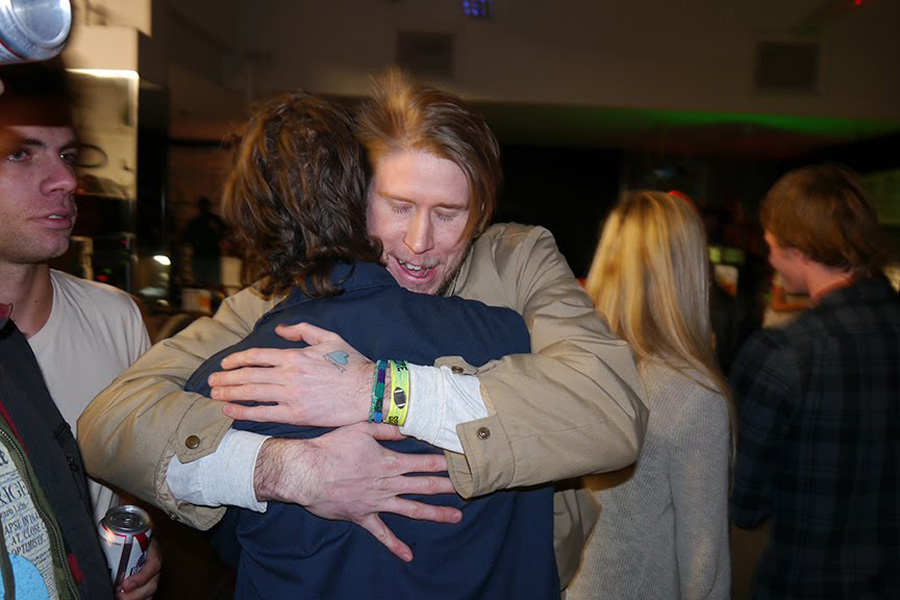
Skateboarding is about nothing if it is not about itself. We are the men on the street talking to ourselves without shame or remorse. Even when we are doing it we are watching it done – it is beneath our feet, the crew at the spot, the park strangers and unknowns we turn to see when we hear wheels in the distance. Every act is allusion and every trick is a reference, and we are ace students of our own history.
And when we talk about skateboarding, our goal is to name and connect distinct parts into some kind of whole. For example I say: isn’t it amazing, the way we can raise and lower our standards without any guidelines, depending only on circumstance? And you will know how this goes – the way you applaud a friend struggling to land a trick that for you is a warm-up. It is a strange and formless competition that is also total support, and we all know it; a ground floor joy at the mere fact of our activity’s existence.
So, in support I decided to drive through a mid-December haze from Chicago to St. Louis and attend the premiere of a local video called St. Losers. A couple of years back, a trailer claimed St. Losers would arrive “Summer 2011.” This was bullshit, of course, but the type of bullshit we forgave because the teaser was sharp and seemed to capture something about a city that is difficult to explain. The final product wouldn’t arrive until a rainy Friday night in mid-December, 2012, at a scummy and disheveled gallery space squatting dead-faced on the sort of street people in St. Louis watch closely with guarded optimism.
What do you know about skateboarding in St. Louis, Missouri? Do you know that there is a DIY spot called “Shitside” that you’re not supposed to call “Shitside” anymore, even though “Shitside” does everything that a good name should do? Do you know that in the summer the St. Louis air weighs on your body and soul like a great flaming guilt that you will never outrun? Watch St. Losers and you will see rust belt decay and wild, nameless plants growing through splayed blacktop in thick, bushy mounds. You’ll see spots that VX-1000 footage portrays as interesting and fun but have almost uniformly shitty-rough ground with oil slicks and deadly cracks and miserable, awkward run-ups.
What I am saying is that St. Losers satisfies the basic task of all skate videos in that it promotes a product. At heart, it’s all product; skateboarding lives and dies by product; its veins course with seasonal releases of constantly updated product. What’s refreshing about St. Losers and other videos like it is the way their only real product is the city itself. With Alex Kehoe’s opening kickflip to stair rumble in the Kiener Plaza fountain, St. Losers stands its city naked before you, knobby-kneed and gaunt and ready, for better or worse, to suffer your gaze.
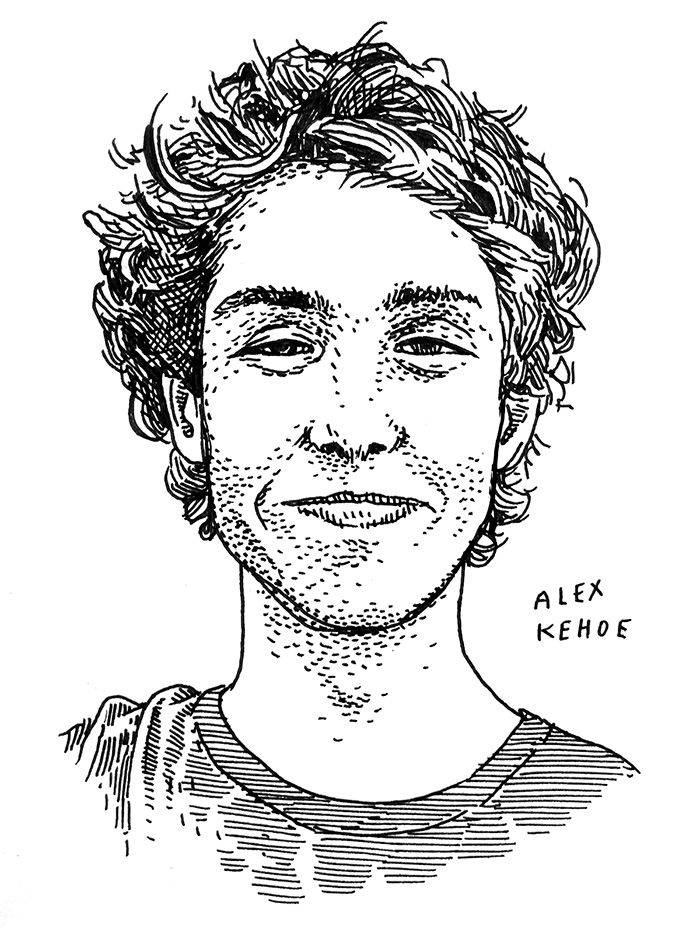
The entire video exudes a kind of authorial gracefulness for which Gabe Kehoe, Alex’s older brother and video editor / filmer, deserves more praise than he’ll get. Gabe speaks of a simple aesthetic, “Not a lot of extra bullshit,” but that’s humility for you. Consider, for example, Gabe’s choice to follow his young upstart brother with a local legend of small stature and wizard feet named Joe Jackson. Like any local legend, Joe’s part cannot do him justice, but credit Gabe for coming close, and for recognizing the role context plays in a full-length video. History, after all, the oxygen without which skateboarding wilts into something lifeless and ugly, is only as compelling as the shapes formed when it’s set into relief with the present.
See also Gabe’s choice of the video’s ender, which goes not to Randy Ploesser or Drew Etzkorn but one Joe Herbert, an aging St. Louis mainstay who’s donated to skateboarding two tired knees and truckloads of salvaged materials that made the city skateable. Joe’s own ender, appropriately, is a switch hurricane across a ledge that did not exist before he found it and glued the angle iron onto it. Whether you enjoy St. Losers or not will hinge in a large part on your response to these two Joe-ass dudes from Missouri of whom you’ve never once heard. Welcome to our new era of zero-budget skateboarding.
”Welcome to our new era of zero-budget skateboarding.”
The next step is, of course, to debate whether any of this is good or bad. Because for years we’ve filled the discourse of our problems, or changes in general, in the most basic terms available. Shop decks and blanks were “bad” for skateboarding. Increased popularity and contest purses are “good” for skateboarding. Real-time scoring rubrics and fantasy leagues? “Good,” says Dyrdek. Tony hawking discount boards at Target and Wal-Mart? Good. Duh. Such arguments, of course, rely on a kind of Fisher Price ethics – meanwhile the actual world takes place in the vast gray desert stretched between these two imaginary poles.
But the other word here is every bit as problematic. We say “skateboarding” and nod, yes, because it’s obvious. This obviousness, though, is dangerous. Surely you’ve heard this refrain: Corporate Entity X should be embraced because it gives back to skateboarding. As if, that is to say, skateboarding needs anyone’s help. As if there was no skateboarding before the plazas and contest tour circuits. As if skateboarding were some emaciated street dog living on table scraps and spare change. Yet this is the way an industry speaks about itself, one that compromises the term “skateboarding,” splitting it at the seams. For any of this to work, “skateboarding” must mean a lifestyle. Fashion choices. A way of mind. And still the rest of us nod yes, fuck yeah, skateboarding.
So the word has been stretched like the industry it sometimes denotes. And with all growth comes conflict: one does not have to be Trotsky to see a growing class divide among the ranks of skateboarders. (Bomb the corporations, some holler, because they ain’t skateboarding. Burn the factory down and let God, who skates Indies, or Hensely, who is god, sort them out.) Indeed the rich are crazily rich, considering their profession. We’ve got a few we could call middle class – they have pro boards but not pro shoes, perhaps, or a pro truck with, like, Orion. Then we have a swelling, anonymous army of unpaid, unsupported kids who are always better, always improving, and making movies that are weird and innovative and sometimes just astoundingly good theater.
”One does not have to be Trotsky to see a growing class divide among the ranks of skateboarders.”
Whether what we’re seeing is something new or a renaissance of a simpler age, a pastiche or nostalgia film, we watch these zero-budget films and our expectations are loose. We are pleasantly surprised. It’s an altogether different experience than watching Pretty Sweet for the first time and worrying you won’t like it, or won’t be able to say why you don’t like it, or being confused and unsure and feeling like you’ve been chumped, somehow, though you’ve no idea by who. That somewhere, somebody is laughing. Here is what interests beyond skateboarding do to “skateboarding.”
Except, how could it not be good? We see them drinking champagne in Aspen. They show us their new cars on Instagram, and they are always grateful to skateboarding. And since I’m a skateboarder too it’s even sort of like they’re thanking me personally. And that feels good, sort of.
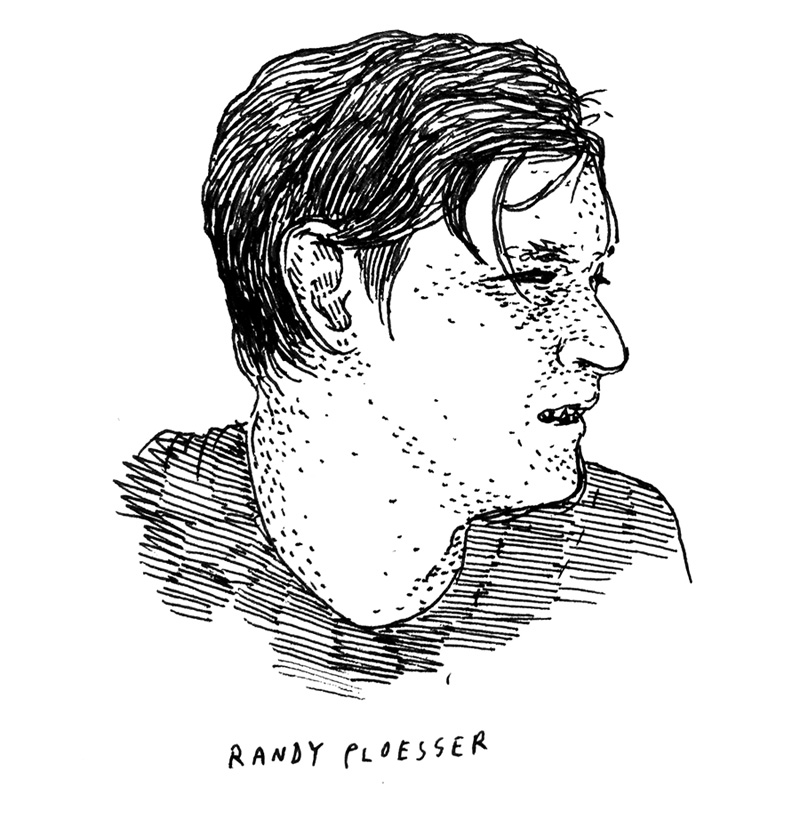
Randy Ploesser does not drink champagne, but he is very smart. “You get a stronger sense of who skateboarders are when you see them skating at home,” he told me. “Something about digging for your own spots in a place that you’ve skated for years; it appeals to me way more than seeing guys being carted around on tour to the best and brightest spots the world has to offer.”
Today you can click to see Randy’s part and others because this is the magic of the age: access free of charge to new products, endless products, every single day. You will not, though, know the feeling on that night in mid-December in St. Louis, when the gallery lights dimmed and the assembled crowd did explode with all hands and voices rising, the thunder of this city’s support like something to stand back and behold.
The three-and-half-minutes that Randy Ploesser filmed for his hometown’s non-boutique, strip mall shop is bookended by two ollies. The first, over grass, is large. The ender, over and across a small nation of cobblestone, is impossible. Tucked between these is a concise and convincing argument on behalf of the middle-class professional skateboarder. He wallies into feeble grind on a rail that bounces when he pops out. He torques a frontside tailslide into a switch five-o, and does a nollie front-bluntslide that makes less sense the more I watch it. But it’s the final ollie that’s the real story. He’s down on the riverfront, the bank of the mighty bitch herself, cold and muddy and choppy in the Autumn wind. We watch him from above, pushing hard in a jacket made by a company that no longer exists, and shoes that arrive only sporadically to his door. Gabe cuts to a side angle. You can’t really make out the nature of the bump of the weird drainage sluice, but Randy soars out of it and over a field of old cobblestones, and the board tilts beneath his feet as if it can’t quite believe how long the ollie is taking. Then we see it a second time, from above. Neither is describable in writing and neither can even remotely be scored. And if you’ve ever seen Randy skate, you know he can do all of this, no matter how little sense it makes, because this is the odd and bizarre and distinctly unmarketable beauty of skateboarding.
So here we are once more, discussing “skateboarding,” that 2.5 billion-dollar industry that, confusingly, shares a name with what some kid is doing right now in a vacant church parking lot in some deadland suburb. If there’s indeed a downside to modern skateboarding it’s that “skateboarding” no longer unites a group of like-minded individuals in a common pursuit. The doors to our community have been propped open; external interests can come and go as they please. And of course we or “we” were the ones who opened these doors. Recall Jamie Thomas defending his New Balance gambit: “You can’t fight a tank with a stick.” Which, aside from being wrong, is sort of an odd thing to say to the unsponsored kid on a beat up deck. And, wait, we’re at a war with whom, exactly? And is Fallen the stick? And if so, which of us gets to drive the tank?
The only real threat to the skateboarding community is not destruction, but growth. Everyone knows as much – so we cling to what once was, and cheer for reminders even when the voice hollering #respectthepast isn’t exactly, um, local. Nostalgia, a trait universal among citizens of the greater skateboard world, is also our vulnerability, the skeleton key into our hearts and wallets both. The beauty of these homegrown videos is the way they reveal the worlds inside the world, a rich landscape of sub-communities that define their own “skateboarding.” They remind us that we can recognize and respect Koston while also understanding that he no longer requires our support – he’s in other hands now, and they are soft, supple, and very rich indeed. But Ishod Wair does, and Malto too, regardless of their footwear. And Steve Nesser and Jake Johnson and Gilbert Crocket and the bucketful of other pros actively invested in the communities that made them.
”skateboarding no longer unites a group of like-minded individuals in a common pursuit. The doors to our community have been propped open; external interests can come and go as they please.”
Because there are exactly two ways that this life reminds us of our communities. The first is catastrophe. The seas rise up and the levees break and despair sets in and we mourn what’s been lost. Candles are lit, prayers muttered, and we appeal to that invisible framework for a return to blessed normalcy. The community, we’re told, will have to pull together and move on. And, miraculously, communities do.
The second type of event is celebration.
Here is the point. We get exactly one go on this boat float, friends. The river moves one way and, like it or not, there is no undoing what’s done. But look, a bunch of us are already here, and have been for years. They’ve stocked the coolers and huffed air into the rafts and are happy to share – someone brought meat and someone else brought plastic forks, charcoal, and the greatest part of all this is that you’re invited. Everyone is invited. Enjoy the scenery and be witness to the performance that is always new and always improved. It is the most fun thing in the world, the best, skateboarding is the single best thing. But be advised: to participate in this goodtime float trip you’ll have to chip in. People are going to capsize and will require help. You might be asked to stand guard while someone takes a shit in the woods. And damn right you’ll have to have to ante up for those beers.
So buy St. Losers. Buy Red and Yellow, Worship Friendship, Sabotage 3. Buy a shop deck and a Send Help board. Buy Brimley. Buy This Machine Kills Fascists and Hoephase and Videophile. And if you will not, at least spare us the self-congratulatory bluster for the moral smokescreen you’ve crafted to feel good about your choice, the faux-rebellion and righteousness. That you’ve numbed yourself to community does not make your hands any less bloody. We’re either in this thing together, fucker, or we’re tunneling for the core.
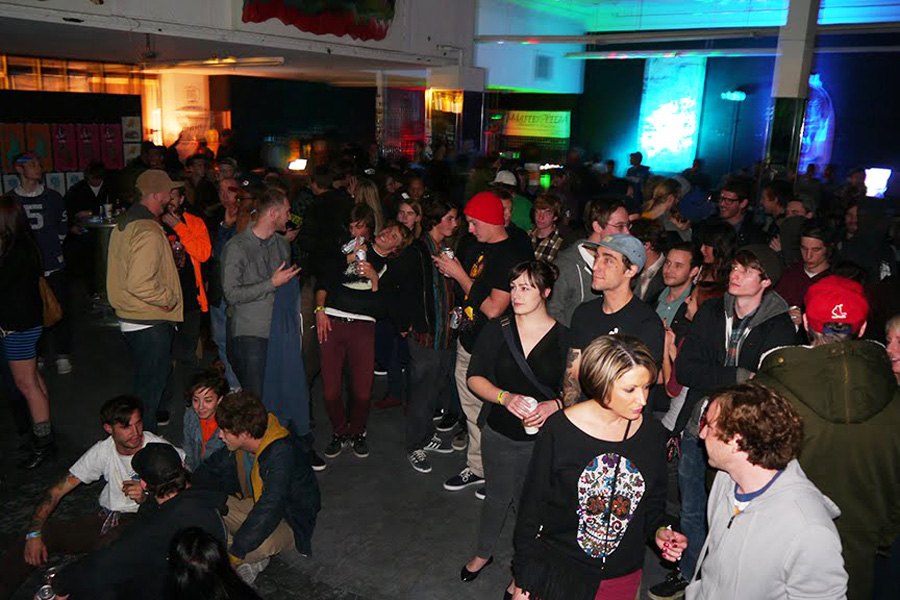
On the night of December 14, 2012, there were shots poured into little dentist cups and law-grade American beers served in stretched aluminum cans. We watched a rough draft of a video that you can purchase at any second by clicking the proper links and sharing basic financial data. You do not even have to stand up or put on pants. By now select parts can been seen online. These will likely breeze through the squinty purview of skateboard culture at large, disappearing quickly into the archive. Some will see the video and be part of the conversation. Most will not. But on this rainy night we heard the clatter of wheels over the deep, fatal cracks that run like nerves across our old and busted city. There were men and boys and girls and even few women; all told we packed four hundred bodies into an underfunded and poorly run gallery space, ranging from parents to scumbags to those rare heroes who are both.
Because this was Missouri, goddamn, and this was a night to look into a shattered bathroom mirror and believe in our defects, our gravel streets and chunked concrete, the overgrown lots and clearance aisle vacancies.
We celebrated in a way that was itself a thing to step back and behold. This is the reason Gabe documents his city, and why you do as well, why we all do. This is why I’ve bothered to write it down. All that we’re ever doing is making up legends.
For more info or to buy St. Losers, click here
Words: Kyle Beachy (https://twitter.com/kylebeachy)
Check out Kyle’s book and other writing on Jenkem
Original Illustrations: Anders Nilsen
Photography: Mike Worful
Rant, comment or bitch on our Facebook
Let us spam you on Twitter
Related Posts
Comments
Popular
-
 RECONTEXTUALIZING ZAK ANDERS, ONE OF TODAY’S MOST MYSTIFYING SKATERS
RECONTEXTUALIZING ZAK ANDERS, ONE OF TODAY’S MOST MYSTIFYING SKATERS
"I don’t want to be this brutal punk that hates everything that people like, and I’m trying really hard to undo that."
-
 RARELY SEEN PHOTOS FROM READ AND DESTROY, THE BELOVED BRITISH SKATE MAG
RARELY SEEN PHOTOS FROM READ AND DESTROY, THE BELOVED BRITISH SKATE MAG
Check out early documentation of London's Southbank, vert ramps tucked into Lord of the Rings-level forests, and everything in between.
-
 NAVIGATING SKATING’S HIGHS AND LOWS WITH MATT MILITANO
NAVIGATING SKATING’S HIGHS AND LOWS WITH MATT MILITANO
Over coffee and cigarettes Matt talks prank shows, ABDs and his love for the VX.
-
 A CHAT WITH LUDVIG HAKANSSON, THE OLDEST SOUL IN SKATEBOARDING
A CHAT WITH LUDVIG HAKANSSON, THE OLDEST SOUL IN SKATEBOARDING
The man loves to read Nietzche, skates in some expensive vintage gear, and paints in his own neoclassical-meets-abstract-expressionist style.
-
 MEET THE SEATTLE ARTIST WHO DESIGNED A BACON ’N EGGS INSPIRED SKATEPARK
MEET THE SEATTLE ARTIST WHO DESIGNED A BACON ’N EGGS INSPIRED SKATEPARK
Breakfast-obsessed skaters rejoice!

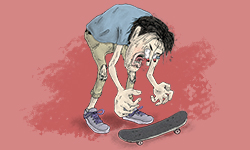
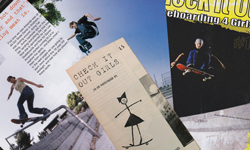
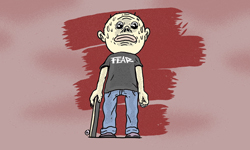
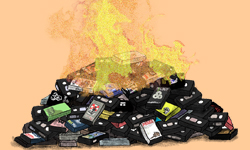
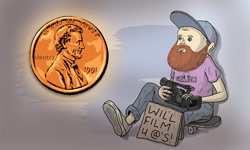

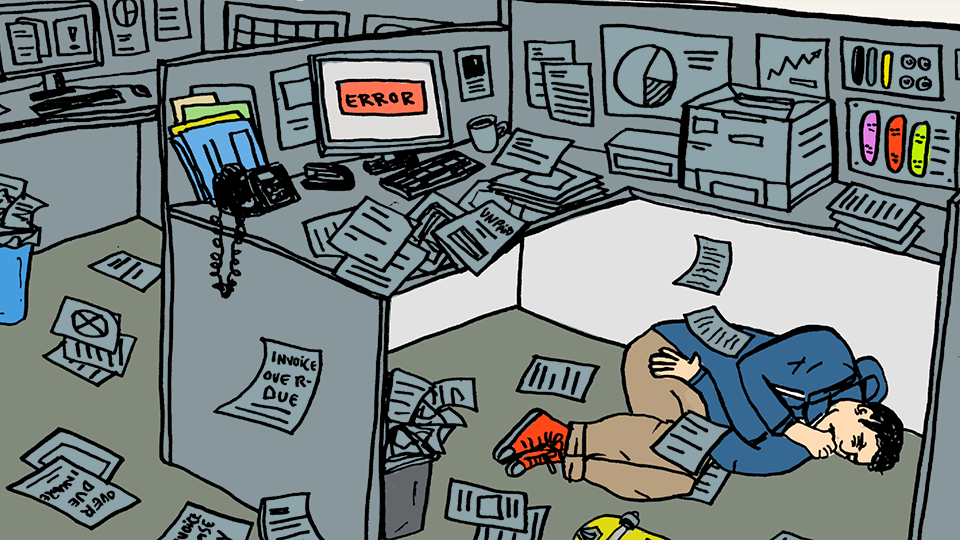

April 9, 2013 12:54 pm
That was some great writing and reasoning.
April 9, 2013 1:18 pm
Randy’s part in St. Losers is fucking incredible.. one of the best parts I’ve seen this year.. and the ender = impossible.
Photoshopped for sure.
April 9, 2013 2:04 pm
This is really great, and conveys things most of us feel quite clearly.
April 9, 2013 2:14 pm
everyone should read this
thank you